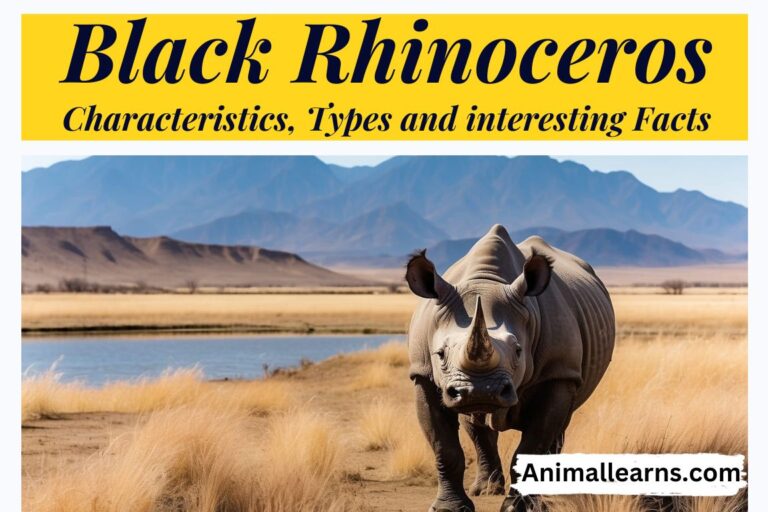11 Examples of Animals with Small Ears (With Pictures)
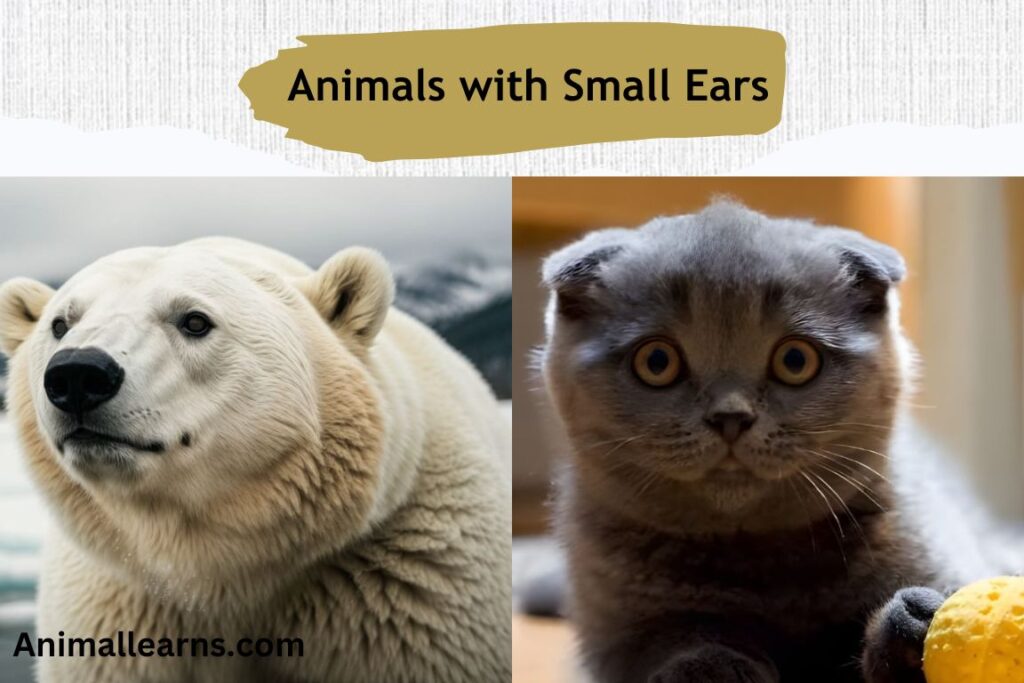
Animals with small ears include a wide variety of species found in nature, each of which has evolved specifically to live and prosper.
The modifications of the sense of hearing, which is essential for humans and a wide variety of animals, are remarkable. Despite lacking external ears, several species of insects, amphibians, reptiles, and birds have developed substitute methods of hearing.
Our curiosity for small-ear animals brings us to a class of species whose relatively small ears bear witness to their versatility. Think about beavers, amazing semi-aquatic creatures that spend a lot of time in the water; their tiny ears reduce drag and help them swim more efficiently.
In the same way, otters have tiny ears wrapped with fur that help them stay warm in chilly waters. The adage “Your ears will never get you in trouble” takes on new meaning as we examine the lives of animals that have different-sized ears and emphasize their distinctive survival techniques.
Let’s explore the intriguing world of 11 small-eared species, each with a unique lifestyle and habitat adaptation.
Animals With Small Ears List
Contents
- Gorilla
- Beaver
- Polar Bear
- Rock Hyrax
- Arctic Fox
- Pygmy Marmoset
- Black Footed Ferret
- Capybara
- Scottish Fold Cat
- Musk Ox
- Cuscus
Gorilla
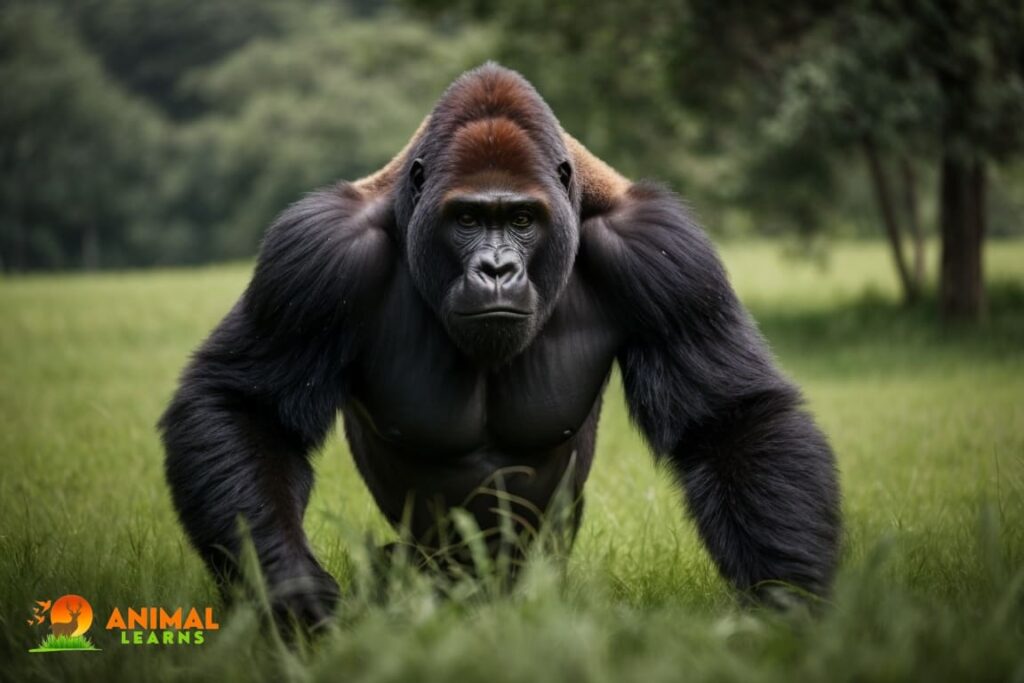
- Diet: Mostly leaves, fruits, shoots, and bark. Some termite snacks too!
- Size: Big! Males up to 6 ft tall, 440 lbs. Females half that.
- Habitat: African rainforests, mountains, and swamps. Lots of green!
Gorillas are large, powerful animals that may grow to a height of over 5’5′′ and weigh up to 226 kg (500 pounds). Their stomachs are huge and their chests are wide.
Gorillas have tiny ears, yet their sense of hearing is well-developed. This skill is useful since they are typically found in areas with dense foliage and limited vision, where hearing is a vital sense for locating group members and detecting danger.
There are two varieties of gorillas in Africa’s equatorial region: the eastern and western gorillas. The most recent census indicates that there are only 1,063 gorillas overall living in the wild. The fact that humans and gorillas share 98% of the same DNA may surprise you.
Regretfully, gorillas lack the requisite immunity that humans possess. Family is incredibly important to gorillas. Mountain gorillas have numerous females and one dominant adult male in groups of two to twelve. Men and women tend to one another, particularly when the latter is a baby.
Beaver

- Scientific Name: Castor canadensis (North American)
- Diet: Leaves, bark, aquatic plants (herbivores)
- Size: 2nd largest rodents, up to 50kg (110lb)
- Habitat: Rivers, streams, lakes, ponds (freshwater)
These semi-aquatic animals are well-known for their remarkable construction abilities; they have built lodges and dams in North American rivers and streams. Beavers have broad, flat, scaly tails and stocky bodies clothed in a coat that ranges from yellow-brown to nearly black.
They can chew through wood and other hard things because of their enormous, orange incisors, which continue to develop throughout their lives.
These semi-aquatic rodents have an interesting feature: they can identify the sounds of different predators, so if they sense danger, they may warn their family members with different sounds.
Polar Bear

- Scientific Name: Ursus maritimus
- Diet: Hypercarnivore, feasting mainly on seals, walruses, and fish.
- Size: Largest land carnivore! Males weigh up to 800 kg (1760 lb) and stand 3 meters tall. Females are half the size.
- Habitat: Arctic sea ice and surrounding land, like islands and coasts.
Adorable marine creatures, polar bears live within the Arctic Circle and are frequently encountered in and around the Arctic Ocean. In addition to being the biggest bear species, they are the largest living carnivore on land.
Fascinating fact: the fur of polar bears is transparent and only appears white when it reflects light. The bears’ skin is black. Their tiny ears help them retain heat, which is essential for survival in Antarctica’s frigid climate.
Their big ears would prevent them from retaining body heat, which would ultimately cause them to perish. In contrast to their keen sense of smell, polar bears have poor hearing. According to researchers, their perception of hearing is quite close to human hearing.
This implies that the 11,200–22,500 Hz sound range is audible to them. Seals are the primary food source for polar bears, as seals have hearing frequencies of less than 2,000 Hz. This demonstrates how polar bears do not need highly developed listening abilities to pursue their preferred prey.
Rock Hyrax

- Scientific Name: Procavia capensis
- Diet: Herbivorous, they mainly eat leaves, fruits, flowers, and bark.
- Size: About the size of a guinea pig, they measure 30-50 cm long and weigh 4-5 kg.
- Habitat: Rocky outcrops, cliffs, and slopes in Africa and the Arabian Peninsula.
These small mammals live in Africa and the Middle East. They are known for their unique appearance and behaviors. Rock hyraxes have short, sturdy legs with brownish-gray fur and a cream-colored underside.
They have a short snout, cleft upper lip, and long black whiskers. The rock hyrax has quite small ears that are barely visible on its head making it one of the most distinctive features. Rock hyraxes are fascinating although they are small. They live socially in groups made up of as many as 80 individuals.
There is communication between them using several sounds such as grunts, whistles, and screams. They eat different plants which include leaves, fruits, and bark from trees among others.
Nevertheless, they can also digest poisonous plants that other animals cannot eat because of having a unique digestive system – their specialized stomach neutralizes toxins while getting necessary nutrients from plants’ bodies.
Arctic Fox
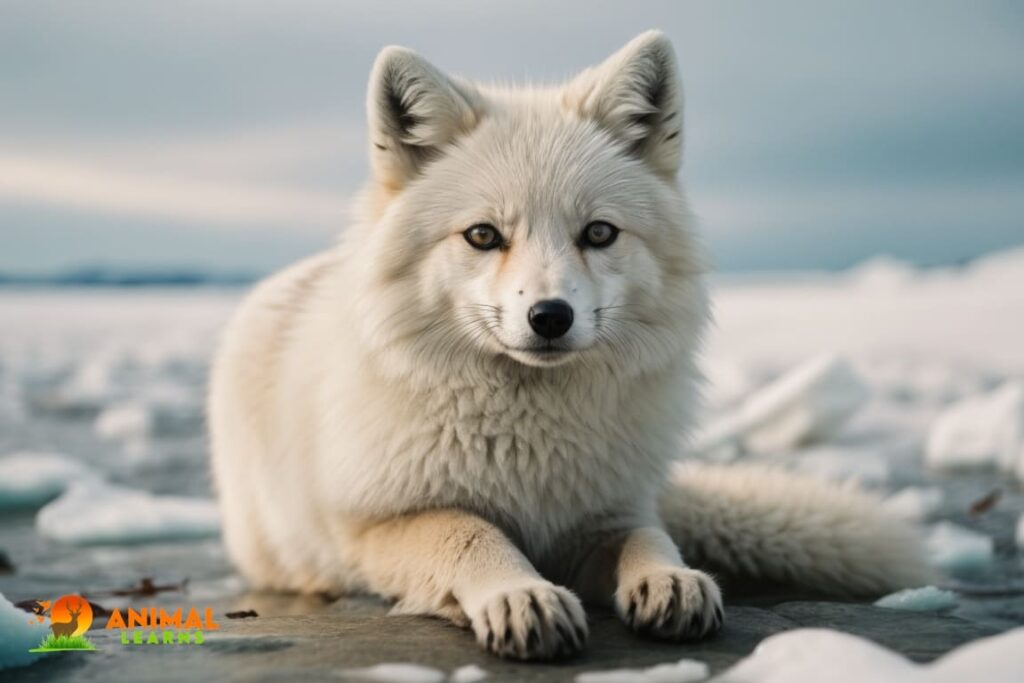
- Scientific Name: Vulpes lagopus
- Diet: Lemmings, birds, fish, carrion, berries (omnivores!)
- Size: Small – 3 feet head-to-tail, 6-12 pounds
- Habitat: Arctic tundra, ice floes, coastal areas
Take a glance at the Arctic fox and make up your mind if you’ve ever questioned if foxes can be cute. These white foxes are found in the Arctic and are often referred to as snow foxes or polar foxes.
They are able to withstand the very cold and frigid Arctic climate thanks to the protection provided by their thick and warm fur! These animals’ tiny ears aid in body temperature regulation by preventing rapid body heat loss.
Their keen hearing and smell skills enable them to follow the movement and scent of their prey through the snow. Arctic foxes’ feet have a thick covering of fur that resembles snow boots, which is ideal given their small size and environment.
Depending on the season, arctic foxes can be white, brown, or even blueish-grey in hue. The arctic fox loses its black fur and grows white fur as winter approaches. This aids in their ability to blend in and conceal, keeping them safe from predators throughout the winter.
Pygmy Marmoset
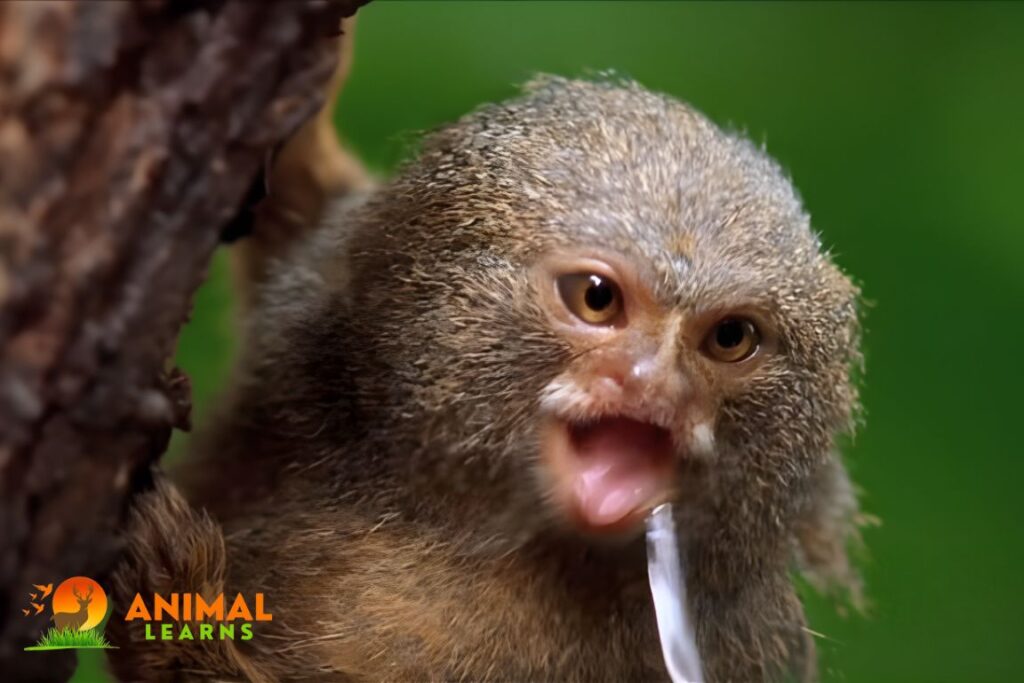
- Scientific Name: Cebuella pygmaea
- Diet: Primarily gum and sap, but also insects, fruits, and small vertebrates
- Size: The world’s tiniest monkey, the pygmy marmoset, is just 5.35 inches long (head-body), or around the size of a computer mouse!
- Habitat: Rainforests of the western Amazon Basin in South America
The world’s smallest monkey, the pygmy marmoset, is a shining example in the fascinating realm of Animals With Small Ears because of its almost imperceptible ears in addition to its cute button nose and mischievous eyes!
Pygmy marmosets weigh between 100 and 125 grams and are only 12 to 15 centimeters in length. They may better blend in with the foliage of the forest canopy where they reside because of their tiny, rounded ears.
Pygmy marmosets are extremely gregarious and energetic animals despite their small stature. They use a variety of vocalizations to interact with one another while living in family groups of up to fifteen members.
Pygmy marmoset diets are among the most fascinating aspects of the species. Their main source of food is tree sap, which they get by chewing through the bark with their pointed teeth to get to the sticky, delicious liquid within. When they can find them, they also consume insects and other tiny creatures.
Black Footed Ferret

- Scientific Name: Mustela nigripes
- Diet: Primarily prairie dogs (up to 90%), supplemented with small rodents and insects.
- Size: Head-body length: 12-15 inches, Tail length: 5-6 inches,
- Habitat: Grasslands of the Great Plains, especially in association with prairie dog colonies.
Slender and wiry, black-footed ferrets have black feet, a black facemask, and a black tail tip. They are ideally suited to their prairie habitat since they mix nicely with the flora and soils of grasslands.
Being carnivores, prairie dogs make up the majority of these ferrets’ diet. Among the few creatures that can consume prairie dogs without becoming ill are them. They also consume mice and voles, among other small animals.
Being nocturnal creatures, black-footed ferrets are most active at night. They sleep in subterranean burrows throughout the day. They are solitary creatures that only associate during mating.
Capybara
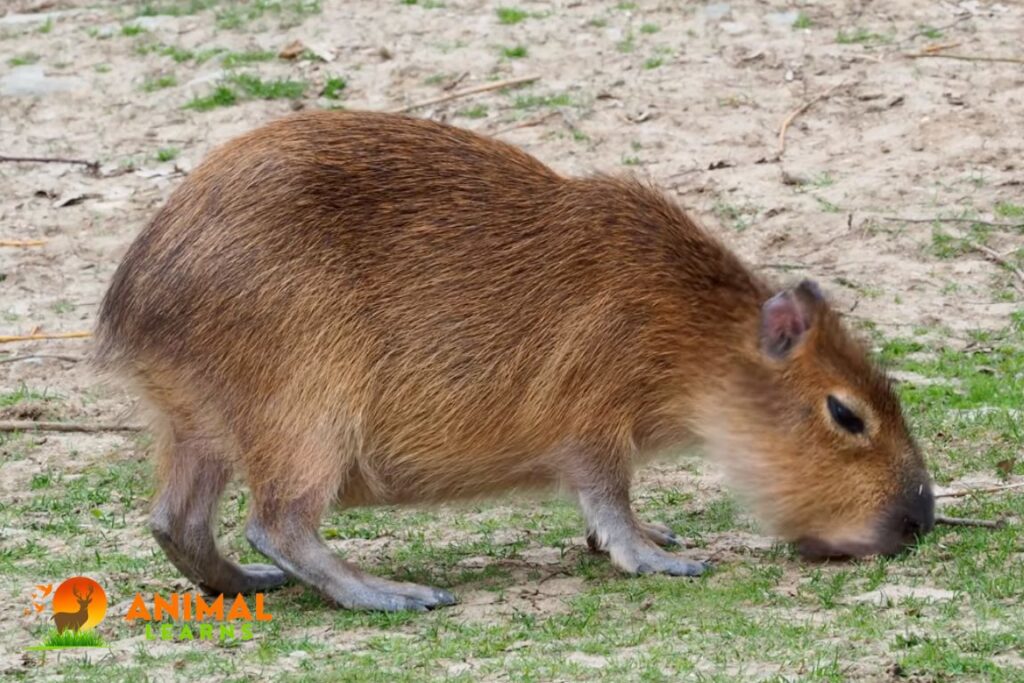
- Scientific Name: Hydrochoerus hydrochaeris
- Diet: Grasses, aquatic plants, fruits, bark (herbivore with a bit of variety)
- Size: Head-body length: 3.5-4.5 ft, Shoulder height: 1.5-2 ft, Weight: 88-220 lbs (think large dog!)
- Habitat: Savannas, grasslands, wetlands, and riverbanks in South America (loves the water!)
Animals With Small Ears snuggled close to their heads enable capybaras to swim fairly stealthily despite their bulky build and make minimum noise when navigating the Amazonian waters. Capybaras are renowned for being amiable and kind despite their size.
They are gregarious creatures that live in packs and are frequently spotted eating grass next to pools of water or relaxing in the sun. The biggest rodents in the world, capybaras are indigenous to South America. Since they are semi-aquatic, they spend a lot of time in or around water.
Their tiny ears are less likely to obstruct their path as they are paddling through the water, and their broad, webbed feet aid in their ability to swim. Capybaras have a unique digestive mechanism that enables them to break down thick plant fibers, which is a fascinating fact about them.
They have a sizable cecum, a structure in their digestive tract that resembles a pouch and is home to microorganisms that aid in the breakdown of cellulose. Because of this, capybaras are able to thrive in their native environments and obtain more nutrients from their diet.
Scottish Fold Cats

- Scientific Name: Felis catus
- Diet: Carnivorous (primarily meat-based)
- Size: Medium (4-6 kg)
- Habitat: Domesticated (originally from Scotland)
A dominant gene mutation in the Scottish Fold breed of cats causes the cartilage in their ears to fold, giving them a very owl-like look. This distinctive ear characteristic lends the cat a lovely and endearing appearance.
The first Scottish Fold, known as “Susie,” was founded on a Scottish farm in 1961 and is considered the progenitor of all Scottish Folds. These cats, which came from Scotland, are now appreciated as valued house pets. Their physique is compact, round, and proportionate.
In addition to having unusual ear shapes, Scottish Folds are well-known for having “the Buddha sit,” or the ability to sit like humans. Together with their adorable looks, these cats’ amiable disposition has made them popular pets. They are loving and like receiving a lot of attention, especially from kids.
Musk Ox

- Scientific Name: Ovibos moschatus
- Diet: Lichen, grasses, sedges, and willows
- Size: Head-body length: 5-8 ft, Shoulder height: 3-4 ft, Weight: 400-800 lbs
- Habitat: Arctic tundra and alpine meadows of North America and Greenland
The Musk Oxen are the last species on our list of small-eared animals. These animals used to be common throughout the Arctic, but hunting has severely decreased their population. These days, they are found sporadically in Greenland and Arctic North America, with an average height of 4-5 feet and a weight range of 180-410 kg (400-900 pounds).
Musk Oxen’s huge bulk aids in retaining body heat, just like that of many other creatures that flourish in cold climes. Small, hairy ears and short legs also help to keep heat loss down by limiting surface area.
Throughout the winter, these herbivorous mammals use their hooves to dig through ice and snow to reach lichens, roots, and mosses. They also graze on readily available vegetation.
Cuscus
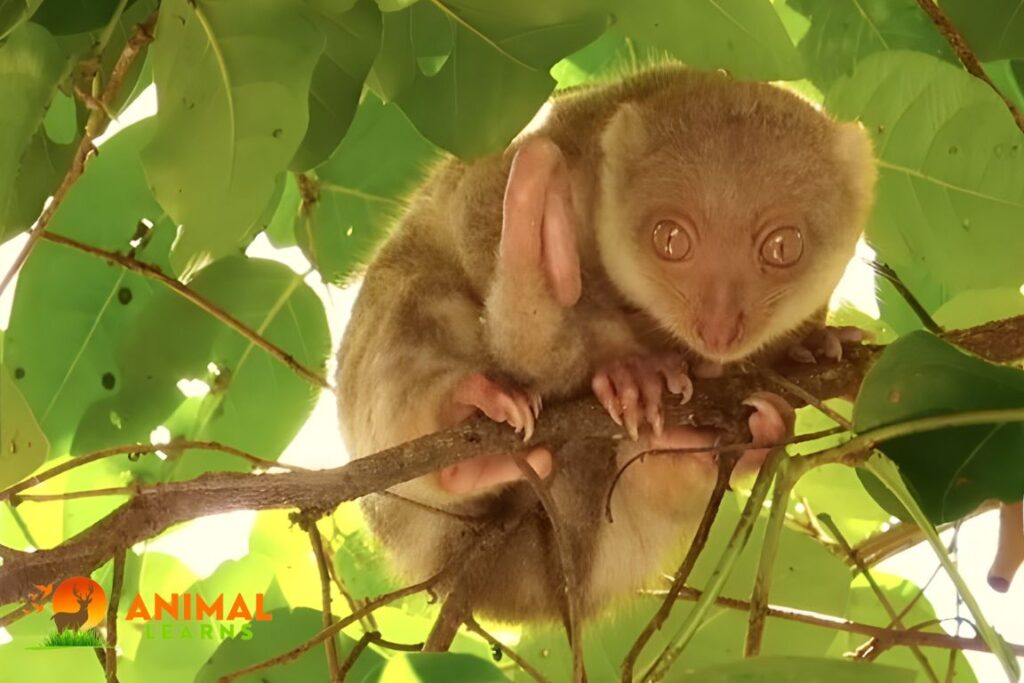
- Scientific Name: Phalangeridae family (various species)
- Diet: Foliage, fruits, nectar, insects (omnivorous)
- Size: Head-body 15-28 inches, Tail 12-24 inches, Weight 4-13 lbs (varies by species)
- Habitat: Rainforests and eucalyptus forests of New Guinea and nearby islands
The cuscus is a suitable addition to the “Animals With Small Ears” group because of its tiny, nearly concealed ears, which are buried within its soft charms, even if their thick fur and loving nature may steal the show!
The cuscus is a type of marsupial that is suitable if you are searching for an animal with tiny ears. These animals have ears that are almost completely covered by their thick hair.
As arboreal animals, cuscuses travel slowly through the trees. Their prehensile tail facilitates their ability to cling to trees and ascend. Due to their nocturnal nature, they sleep for most of the day.
Cuscuses mostly consume leaves, flowers, and fruits in the wild. They are able to digest tough plant material because of their unique digestive mechanism.
Different Types Of Ears Of Animals
Animals have an amazing variety of ear modifications that are well-suited to their unique surroundings and ways of living. Most mammals, including humans, have external ears that receive sound waves and direct them toward the eardrum.
On the other hand, numerous bird species, reptiles, and certain mammals, including bats and dolphins, have developed less noticeable or nonexistent external ear structures. For hunting, communication, and navigation, these creatures frequently rely on their acute sense of hearing.
Furthermore, many insects, such as grasshoppers and crickets, have special hearing organs called tympanal organs that are dispersed throughout their body. The enormous range of adaptations that have developed across the animal kingdom to support auditory perception in various ecological niches is reflected in the various sizes and forms of these ears.
Within the interesting realm of nature, small-eared animals display a variety of adaptations that highlight the amazing range of ear sizes found in different species.
Exploring the animal kingdom reveals a captivating array of different types of ears, with a notable focus on animals with small ears and their unique evolutionary advantages.
FAQs
Why do some animals have small ears?
Animals with small ears often have adapted to their environment and lifestyle. The reduced ear size serves specific purposes, such as minimizing drag for efficient swimming or conserving warmth in cold water.
Which animals have the smallest ears in the world?
The bat species known as the bumblebee bat, or Kitti’s hog-nosed bat, holds the record for the smallest ears among mammals.
Do any animals have no ears at all?
Yes, certain species of snakes, such as the Pythonidae family, lack external ear structures. Snakes detect vibrations through their jawbones instead.
Why do animals have small ears?
Animals with small ears often exhibit this adaptation to serve specific purposes, such as enhancing agility, minimizing drag during swimming, or providing protection against environmental challenges.
Do monkeys have small ears?
While some monkeys, like the proboscis monkey, have big ears that protrude from their heads, other monkeys, like the spider monkey, have smaller ears. It’s fascinating to think about how an animal’s physical characteristics might change throughout time to better fit its unique surroundings.







